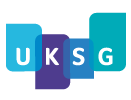Rachel Frick has recently transitioned to her new position as the Business Development Director for the Digital Public Library of America (DPLA). Insights has been having an ongoing conversation with Rachel about how her career path has led to her current role and on the role of librarians in the next stages of the 21st century
Rachel has had a varied career working both with and alongside librarians in a multiplicity of roles. She is fully committed to the ideology that librarianship is moving beyond the library building and that the professional future of librarians lies within open systems and open platforms. Over the past four years, Rachel served as the Director of the Digital Library Federation (DLF) program of the Council on Library and Information Resources (CLIR). Prior to being hired by CLIR/DLF, she worked at the Institute of Museum and Libraries Services (IMLS), the University of Richmond and for FAXON. She credits this varied career for leading her to her current position as the Business Development Director for the DPLA. She has had exposure to numerous different work experiences from her past role as a serials vendor, interacting with all types of library. Her focus then moved from selling to librarians within a typical academic library environment to working as a circuit librarian, providing library services to medical professionals in rural North Carolina. This included visiting community colleges, doctors’ offices and rural health clinics. Prior to online access, this work often involved faxing articles through an Area Health Education Center (AHEC) Network to support rural health givers with various medical situations.
Rachel’s career path was influenced by the many technological changes taking place in libraries: the growth of e-journals and the automated tools to manage them, ERMs at the Victoria Commonwealth University (VCU) and local digitization projects at the University of Richmond, the IMLS and the DLF.
Recognizing there are many core themes throughout her career, Rachel feels the most prominent is providing access to content to which communities would otherwise not have ready access. Her skills, developed with each job transition, play into her current role with the DPLA.
Another aspect Rachel credits to her early days working for a serials vendor is her ability to make connections between people in order to build more fruitful partnerships around various projects. The connections made with people often happen completely outside library-oriented discussions. She shared a story in which she spent an entire business dinner talking with her dining partner about kitchen renovations, specifically dishwashers, only to later learn they were the premier expert within their field of study. Rachel has often found that by discovering what a person’s passions are, you make a deeper and more sustained connection with them that allows for better collaborations on future projects. She often refers to this type of situation as taking the pause from the work or business at hand.
This type of connection/collaboration with someone also results in a greater sense of loss when that person is no longer with us due to burn-out or sudden death. One person who had a striking impact on Rachel was Lee Dirks, who died suddenly with his wife in later 2012. Rachel describes Lee as someone who reignited her passion for librarianship and the social mission of librarians. Upon his passing, Rachel said she felt a recommitment to believing in herself and to doing everything possible to make a better library environment for everyone. When we first had this conversation, Birdie MacLennan had just died suddenly of natural causes. Birdie was a long-time and committed member of NASIG, who had served in many capacities within that organization. She was also the person who started the listserv, SERIALST. Birdie was another person who exerted quiet but sustained impact upon the profession and those librarians who worked with her professionally.
The DLF has a focus on practitioners/membership institutions and works as a platform to advance the work of librarians and libraries. Under Rachel’s tenure, the program grew from 35 members to over 100; its annual meeting increased not only in attendance, but also in revenue and range of content. In her role as the Director of the DLF for CLIR, Rachel saw herself as connector, facilitating the coming together of talent and projects. She also worked hard to bridge conversations that were happening in silos within different groups, often calling this ‘community cross-pollination’. One of the great successes with this work was the development of cross-pollinator awards so that there could be more fruitful discussions at events like Code4Lib and the Electronic Resources & Libraries Conference. This program grew to include awards to bring developers to the Association for Moving Image Archivists meeting and to also support the attendance of museum professionals at the annual DLF Forum. In her role as the Business Development Director at the DPLA, Rachel expects to further develop and expand upon these skills in order to create a sustainability plan and further enrich the DPLA community.
The vision of the American national digital library has been circulating among librarians, scholars, educators and private industry representatives since the early 1990s. Efforts led by a range of organizations, including the Library of Congress, HathiTrust, and the Internet Archive, have successfully built resources that provide books, images, historic records and audiovisual materials to anyone with internet access. Many universities, public libraries and other public-spirited organizations have digitized materials, but these digital collections often exist in silos. The DPLA brings these different viewpoints, experiences and collections together in a single platform and portal, providing open and coherent access to digital collections from US cultural heritage institutions.
The DPLA planning process began in October 2010 at a meeting in Cambridge, MA. During this meeting 40 leaders from libraries, foundations, academia and technology projects agreed to work together to create ‘an open, distributed network of comprehensive online resources that would draw on the nation’s living heritage from libraries, universities, archives, and museums in order to educate, inform, and empower everyone in current and future generations’.
In April 2013, the DPLA was officially launched after 18 months of community-organized planning. It is led now by its Executive Director, Dan Cohen, and guided by a Board of Directors comprised of leading public and research librarians, technologists, intellectual property scholars and business experts from around the country. Based in Boston in the historic Boston Public Library, the DPLA has grown from an initial staff of four to eleven.
The DPLA is a network of hubs that aggregate metadata on behalf of many cultural heritage institutions, much like Europeana the pan-European digital library. The organization supports the open exchange and reuse of content with no new rights assigned. Towards that end, the DPLA is committed to using metadata that is either copyright free, or is consistent with the Creative Commons ‘zero’ (CC0) Public Domain Dedication, enabling it to be reused by libraries throughout the world. It is committed to ‘open’ not only with metadata, but also its code and policies (http://dp.la/info/about/policies/). Rachel often references the Open Knowledge definition of openness in her work with the DPLA and also with Linked Open Data in Libraries Archives and Museums (LODLAM.net): ‘A piece of data or content is open if anyone is free to use, reuse, and redistribute it – subject only, at most, to the requirement to attribute and/or share-alike’. See more at: http://opendefinition.org/#sthash.b6HFBJSJ.dpuf. Rachel points out that it is a great way to make sure everyone is on the same page when we talk about open concepts, especially in regard to open data.
Some of the greatest obstacles to achieving the vision of a shared, nationally scoped infrastructure, like the DPLA, are the tendencies within such an organization to make short-term decisions that destroy the ability to develop open resources in the future. Decisions are often made out of budgetary constraints, staffing inadequacies, or other short-term local pressures. Another aspect to consider is the need for core competencies for librarians that include the comprehension of coding and system infrastructure in order to make a library viable and able to grow. Rachel also recommends we revisit and restructure how we hire librarians in today’s library, to be open to developing and achieving innovative thinkers. As long as we continue to hire from the same places and utilize the same tools for hiring new employees, we create barriers to expanding our profession. We need to seek out more non-traditional hires for some of our positions and expand the concept of what it means to be a librarian. Another area where Rachel sees improvements to be made is in the delineation between public librarians and academic librarians in the United States. There is a great deal that academic librarians can learn from public librarians in relation to advocacy and promotion of services and facilities. In exchange, public librarians can benefit from the technological expertise in systems and networked infrastructure held by many academic research librarians.
Rachel is excited to be part of the DPLA at this juncture and she lists the Knight News Challenge award ‘Getting it Right on Rights’ as one of the most exciting projects under way. This project will help facilitate the collaboration between the DPLA and Europeana to create a set of rights designations to serve as an internationally recognized standard along with a best practices guide that institutions around the world can use to safely make more content available to the public. Rachel also cites New York Public Library’s involvement in leading net neutrality discussions in the US as another example of librarians crossing over the threshold of the library to engage communities at large. Another example of engagement along these lines within the US is the involvement of the Chattanooga Public Librarians with the IMLS grant entitled ‘Inclusive Gigabit Libraries: Learn, Discuss and Brainstorm’, to help under-represented and under-served populations engage with digital technologies to develop new services and evaluate critical human development needs. The ongoing conversations held and supported by OpenGLAM, an initiative run by the Open Knowledge Foundation that promotes free and open access to digital cultural heritage held by Galleries, Libraries, Archives and Museums, are also critical to the future and expansion of the role of libraries. Last, but certainly not least, the work of the Academic Research Libraries in the US around OpenCon: Student and Early Career Researcher Conference on Open Access, Open Education and Open Data. This is the first event of this kind that builds on the success of the Berlin 11 Satellite Conference for Students and Early Stage Researchers, to help expand and further the conversations related to the openness movement.
One of the things that Rachel hopes the global knowledge community could agree upon is that ‘open’ does not equal ‘free’ and we as a community need to agree on what open means in order to move forward in a meaningful way. She encourages everyone to read Chris Anderson’s article in Wired on ‘Free’ (http://archive.wired.com/techbiz/it/magazine/16-03/ff_free?currentPage=all). Rachel acknowledges that in many cases, we’ve picked all of the low-hanging fruit when it comes to developing open systems and openly available content, so now librarians and information professionals need to start tackling some of the more difficult aspects of maintaining and supporting openly available resources and this will mean climbing the trees and committing more from our organizations. Lastly, we always need to remember librarians/information professionals are stewards and facilitators, not gatekeepers.
In her spare time, Rachel is committed to fixing up her home, which was a former Lutheran parsonage in Maryland, spending time with her two loveable shoe-eating dogs, Alvin and Lulu, and enjoying life at home with her family. She is also becoming an avid canner of fruits and vegetables.



